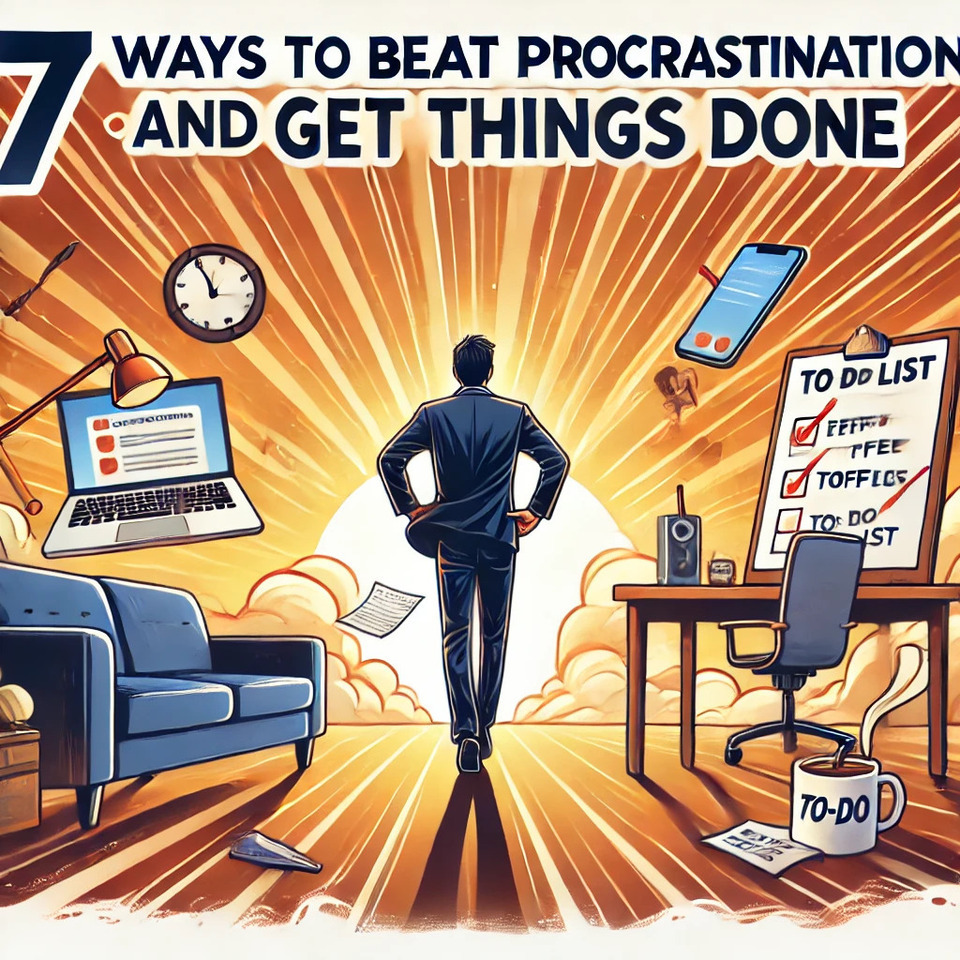7 Ways to Beat Procrastination and Get Things Done
7 Ways to Beat Procrastination and Get Things Done
By Mark Wager
Procrastination is the silent thief of success. We tell ourselves that we’ll start tomorrow, that we just need to be in the right mood, or that we’ll get more done under pressure. Before we know it, deadlines are looming, stress levels are rising, and we’re left wondering where all the time went.
The truth is, procrastination isn’t just about laziness or lack of discipline. It’s often driven by fear, perfectionism, or even our brain’s tendency to prioritise short-term comfort over long-term gains. If you find yourself putting things off more than you’d like, don’t worry—you’re not alone. The good news is that procrastination can be beaten with the right strategies.
Here are seven powerful ways to overcome procrastination and start getting things done.
1. Understand Why You Procrastinate
Before you can fix a problem, you need to understand what’s causing it. Procrastination often comes from deeper psychological roots than just “not feeling like it.” Ask yourself:
• Are you overwhelmed by the task?
• Are you afraid of failure or judgment?
• Are you waiting for the “perfect” time?
• Do you lack motivation because the task doesn’t seem meaningful?
Once you identify the reason behind your procrastination, you can tackle it more effectively. If you’re overwhelmed, break the task into smaller steps. If fear is holding you back, remind yourself that taking imperfect action is better than doing nothing at all.
2. Break It Down and Start Small
One of the biggest reasons we procrastinate is that tasks seem too large or complex. Our brains resist starting something that feels like a huge undertaking. The solution? Break the task down into the smallest possible step and start there.
For example, if you need to write a report, don’t think about the whole thing at once. Just focus on writing the first sentence. If you need to clean your house, start with one corner of a single room. Action creates momentum, and once you begin, it’s much easier to keep going.
3. Use the ‘Two-Minute Rule’
This simple but effective strategy can help you get started. The rule is: If a task takes less than two minutes, do it immediately.
• Need to send a quick email? Do it now.
• Have dishes in the sink? Wash them right away.
• Need to make a short call? Pick up the phone.
For larger tasks, modify the rule: Commit to working on it for just two minutes. Tell yourself, “I’ll only do this for two minutes, and then I can stop.” More often than not, you’ll find that once you start, you’ll keep going.
4. Create a Deadline (Even If It’s Fake)
Deadlines can be powerful motivators. If you don’t have a natural deadline, create one and hold yourself accountable.
• Tell a friend you’ll send them your progress by a certain date.
• Set a timer and challenge yourself to finish within that time.
• Use a tool like a countdown timer to create urgency.
Parkinson’s Law states that “work expands to fill the time available for its completion.” If you give yourself all day to complete something, it will take all day. But if you give yourself one hour, you’ll focus and get it done faster.
5. Eliminate Distractions and Temptations
Your environment plays a massive role in procrastination. If your phone is constantly buzzing, your email is open, or Netflix is just one click away, it’s no wonder you struggle to focus.
Take control of your surroundings by:
• Putting your phone on silent or in another room.
• Using website blockers.
• Working in a quiet space where you won’t be interrupted.
Make it harder to procrastinate by removing distractions before you start.
6. Use the ‘Commitment Device’ Trick
A commitment device is a way of forcing yourself to follow through by making procrastination more painful than taking action.
Examples include:
• Public accountability: Announce your goal publicly so you feel pressure to follow through.
1• Blocking temptation: If social media distracts you, use apps that lock it for a set period.
By making procrastination costly or embarrassing, you’ll be more likely to push through and take action.
7. Reward Yourself for Progress
Most people wait until they’ve completed a task before they allow themselves to feel good. But that’s a mistake. The brain is wired to respond to rewards, and you can use that to your advantage.
Set up small rewards for progress, not just completion. For example:
• After writing 500 words, you can have a coffee break.
• After finishing a difficult task, you get 10 minutes of guilt-free scrolling on your phone.
• After completing a workout, you watch an episode of your favourite show.
By associating tasks with positive reinforcement, you train your brain to enjoy productivity rather than avoid it.
Action Over Perfection
At the core of procrastination is a simple truth: waiting for the perfect time will keep you stuck.
There is no perfect time. You won’t always feel motivated. The conditions will never be ideal. The key is to start anyway.
Progress is better than perfection. Momentum is built through small actions, not big leaps. So, take that first step today—however small it may be—and before you know it, you’ll be getting things done with ease.
What’s the first task you’ve been putting off? Take two minutes and start now.
Posted: Wednesday 26 March 2025

